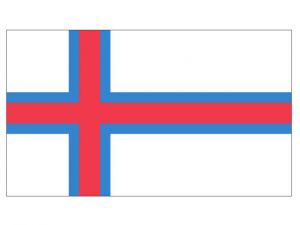Language/Faroese/Grammar/Future-Tense
Hi Faroese learners! 😊
In this lesson, we will learn the future tense in Faroese. The future tense is used to express something that will happen in the future. We will also learn some interesting facts about the Faroese language and culture. So let's get started!
Finish this lesson and explore these related pages: Pronouns & Conditional Mood.
The Future Tense[edit | edit source]
In Faroese, to form the future tense, we use the auxiliary verb "skal" which means "shall" or "will" in English. We then add the infinitive of the main verb. For example:
- Eg skal fara til Tórshavnar í morgin. (I will go to Tórshavn tomorrow.)
Let's look at some examples of Faroese verbs in the future tense:
| Faroese | Pronunciation | English |
|---|---|---|
| Eg skal lesa. | [ɛi skal ˈlɛsa] | I will read. |
| Tú skal dansa. | [tʉ ˈskal ˈdan.sa] | You will dance. |
| Hann skal syngja. | [han ˈskal ˈsɪngja] | He will sing. |
| Hon skal vera her. | [hɔn ˈskal ˈvɛra her] | She will be here. |
| Vit skulu fara. | [viɪt ˈskulʉ ˈfar.a] | We will go. |
| Tær skulu lesa bøkur. | [taiɹ ˈskulʉ ˈlɛsa ˈbœ.kʉɹ] | They will read books. |
It's important to note that the auxiliary verb "skal" can also mean "must" in certain contexts. For example:
- Tú skal fara heim. (You must go home.)
Interesting Facts About Faroese[edit | edit source]
1. Faroese is a North Germanic language spoken mainly in the Faroe Islands, which is an autonomous territory of Denmark.
2. Faroese developed from Old Norse, the language of the Vikings, and it is closely related to Icelandic and Norwegian. However, it has also been influenced by Danish, as Denmark ruled over the Faroe Islands from the 14th century until 1948.
3. The Faroese language has two distinct dialects: West and East. The West dialect is spoken on the western islands and it is the official standard language. The East dialect is spoken on the eastern islands.
4. Faroese has some unique letters in its alphabet, such as "ð" and "ø". "ð" is pronounced like "th" in "that", while "ø" is pronounced like the "u" in "hurt".
5. The Faroese language has a rich literature, including epic ballads known as kvæði. These ballads often tell stories of the Norse gods and heroes.
Dialogue[edit | edit source]
To see the future tense in context, here is a short dialogue between two people:
- Person 1: Hvat skal tú gera í morgin? (What will you do tomorrow?)
- Person 2: Eg skal ganga á fjallið. (I will go hiking in the mountains.)
- Person 1: Hvussu langt skal tú ganga? (How far will you hike?)
- Person 2: Eg skal ganga umleið átta km. (I will hike about eight kilometers.)
Practice Exercise[edit | edit source]
Here are some sentences in the present tense. Use the future tense to translate them into Faroese:
1. Eg lesa bókina í kvøld. 2. Tú koma í dag. 3. Hon syngur sera væl. 4. Vit eta búnirnar á morgni. 5. Tær fara til útlandis í næstu viku.
Answers: 1. Eg skal lesa bókina í kvøld. 2. Tú skal koma í dag. 3. Hon skal syngja sera væl. 4. Vit skulu eta búnirnar á morgni. 5. Tær skulu fara til útlandis í næstu viku.
If you want to practice your Faroese speaking skills, you can use the Polyglot Club website. Find native speakers and ask them any questions!

